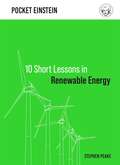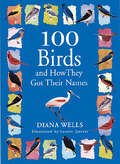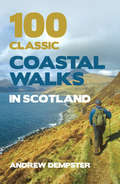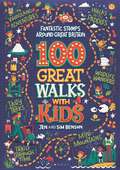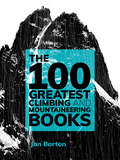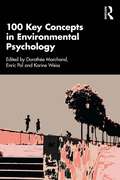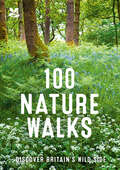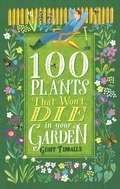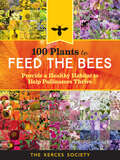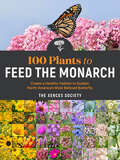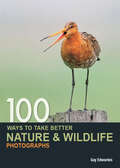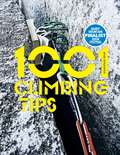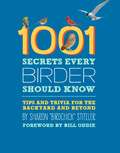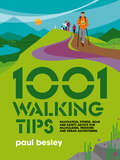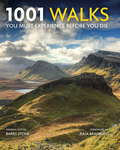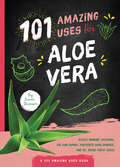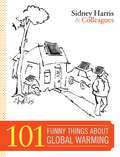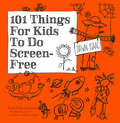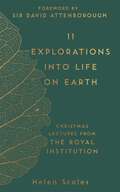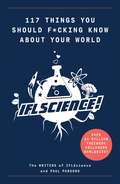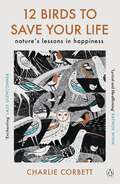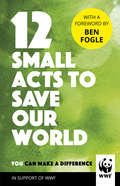- Table View
- List View
عمدة الطبيب في معرفة النبات
by يحيى مراددراسة التراث وتاريخ العلوم عند العرب والمسلمين، أمر لابدّ منه في مرحلة التحوّل التي تمر بها الأمة العربية. ذلك لأن اطلاع أبنائها على المنجزات العلمية التي حققها الأجداد في الماضي، لابدّ أن يكون باعثاً على الثقة في النفوس، وحافزاً لحث الخطى في طريق التقدم العلمي والتقني الذي نسعى لتحقيقه. ومن واجب التراث علينا أن نتصدى بأنفسنا لكشف مكنوناته، ونشر روائعه، وإلقاء الضوء على مدى مساهمته في إغناء المعرفة والعلم خلال قرون عديدة، بعد أن ظل هذا العمل مقتصراً على المستشرقين الذين ينتمون إلى أمم مختلفة. وفي مكتباتنا العربية العامة والخاصة كثير من المخطوطات القيّمة، والكتب النافعة التي لم تدرس حتى الآن، ولاسيّما في موضوع الطب والصيدلة وعلم النبات والتي كان لها سماتها، فأدت دوراً كبيراً في إثراء العلوم وبث روح الحياة. حيث كان يلتقي النبات والدواء في مسيرة واحدة لتأمين الغذاء النافع والدواء الناجع. لقد توافرت للعرب ثروة معرفيّة ولغويّة هائلة حين انصرفوا إلى الطبيعة، كغيرهم من الأمم التي سبقتهم، فوجدوا أن الأرض تزخر بالخيرات، من شجر وعشب وبقل وتابل وغذاء، فانصرفوا إلى "علم الفلاحة" ودراسة النباتات. وألّفوا في ذلك كتباً كثيرة لها أهميتها في ميادين علوم النبات والصيدلة والطب وغيرها. وكانت عنايتهم بأصناف النبات نابعة من حاجتهم إلى الغذاء والدواء معاً. وإلى التطيب بالعطور، وصناعة الصباغة والدباغة، وتركيب المواد الصيدلانية من جذور وقشور وثمار وبذور وأعشاب نباتات مختلفة. وهكذا أصبحت المعاجم العربية، والمؤلفات العلمية، غنية بكم وافر من الأسماء والمصطلحات النباتية، وضمَّت معارف العرب المسلمين القدماء في علمي الطب والنبات. فكانت مصدراً لمن ألف وكتب في المفردات النباتية والغذائية والدوائية. وهي كثيرة العدد نذكر منها: "كتاب النبات" لأبي حنيفة الدينوري(1) ت 282هـ-895م)، وكان من أكثر المعاجم جمعاً للمادة، وأعظمها أثراً في معاجم النبات التي ألفت فيما بعد.
10 Short Lessons in Renewable Energy
by Stephen Peake'[An] impressively comprehensive, concise introduction to the biggest challenge facing us all – how to get our act together to keep our only planet habitable, for ourselves, our descendants and the living nature we depend on.' Walt Patterson____________‘"Energy" might be a short word, but it's a very big subject, and indeed one of the most important facing our world today. Understanding the ins and outs of how we make the transition to clean energy is a vital modern competence. Stephen Peake provides a top briefing. Informative, accessible and comprehensive, it is a must read for anyone interested in the future of our planet.’ Tony Juniper CBE____________‘The author says it all in his introduction: "Renewable energy powered our lives long before fossil fuels and will do so long after." As successive nations and corporations commit to net zero, the idea of getting our useful work done using clean non-depleting resources is of paramount importance. This witty, wide-ranging yet succinct guide provides a whistle-stop tour of the principal renewable energy technologies and places them elegantly in the contemporary economic, social and political context.’ Jonathan Scurlock, Chief Adviser, Renewable Energy and Climate Change at the National Farmers’ Union–––––––––––––Professor Stephen Peake takes us on a guided tour of the ten most essential aspects of this timely and fast-moving science, examining the transition from fossil fuels to clean energy that lies at the heart of a brighter climate future.Renewable energy is central to managing climate change and our transition to a sustainable energy supply for the 10 billion of us who will populate the earth by 2050. But how will we cope without fossil fuels to heat, cool and light our buildings, power our industry and run our transport systems? And are some renewables better than others? 10 Short Lessons in Renewable Energy distils the key issues of this timely subject, examining how we can harness the power of a range of groundbreaking energy technologies most effectively to achieve a sustainable energy future.About the series: The Pocket Einstein series is a collection of essential pocket-sized guides for anyone looking to understand a little more about some of the most important and fascinating areas of science in the twenty-first century. Broken down into ten simple lessons and written by leading experts in their field, discover the ten most important takeaways from those areas of science you’ve always wanted to know more about.
100 Birds and How They Got Their Names
by Diana WellsHow did cranes come to symbolize matrimonial happiness? Why were magpies the only creatures that would not go inside Noah's Ark? Birds and bird imagery are integral parts of our language and culture. With her remarkable ability to dig up curious and captivating facts, Diana Wells hatches a treat for active birders and armchair enthusiasts alike. Meet the intrepid adventurers and naturalists who risked their lives to describe and name new birds. Learn the mythical stories of the gods and goddess associated with bird names. Explore the avian emblems used by our greatest writers--from Coleridge's albatross in "The Ancient Mariner" to Poe's raven. A sampling of the bird lore you'll find inside: Benjamin Franklin didn't want the bald eagle on our National Seal because of its "bad moral character," (it steals from other birds); he lobbied for the turkey instead. Chaffinches, whose Latin name means "unmarried," are called "bachelor birds" because they congregate in flocks of one gender. Since mockingbirds mimic speech, some Native American tribes fed mockingbird hearts to their children, believing it helped them learn language. A group of starlings is called a murmuration because they chatter so when they roost in the thousands. Organized alphabetically, each of these bird tales is accompanied by a two-color line drawing. Dip into 100 Birds and you'll never look at a sparrow, an ostrich, or a wren in quite the same way.
100 Classic Coastal Walks in Scotland
by Andrew DempsterScotland and its islands encompass more than 10,000 miles of breathtaking coastline. The 100 routes outlined by Andrew Dempster take in the quaint fishing ports, long sun-bleached strands and vast golf links of the east coast; the grand Gothic cliffs, natural arches and storm-tossed seastacks that comprise much of the fractured edge of the Atlantic; the kaleidoscopic wildflower carpet of the Western Isles machair; the romantic castles and Clearance settlements of Skye; and myriad idyllic secluded beaches and breathtaking clifftop vantage points.This unique guide covers the whole spectrum, from short hour-long beach strolls to serious full-day hikes that require mountain gear and total commitment.Compiled in a user-friendly format and containing maps and illustrations throughout, 100 Classic Coastal Walks in Scotland provides a wealth of walking possibilities for anyone with an interest in outdoor pursuits, with many of the walks also suitable for children.
100 Great Walks with Kids: Fantastic stomps around Great Britain
by Jen Benson Sim BensonThis book features 100 wonderful walks right across Britain suitable for families with children from 0 upwards, including carrier- and buggy-friendly routes and themes such as mini mountains, walks with paddles, beaches, woodland, wildlife, circumnavigations of lakes, and walks from child-friendly cafes. Starting with a useful and informative introduction with advice on making walks with kids successful and enjoyable (best clothing and equipment, food and drink, the countryside code, and a light-hearted troubleshooting guide for commonly-encountered problems), the book divides the walks themselves by geographical area: - England: south-west, south-east, central north-west, north-east- Wales: south, central, north- Scotland: borders and south,central, north and islands Symbols will indicate easy parking, toilets, child-friendly cafes, baby changing, dog-friendliness and buggy suitability. QR codes by each walk will link to free online OS maps for those routes, so readers can read the walk description and get the map up on their phone, then choose to bring the book with them or not. Each route is graded according to its relative difficulty but all will be short to moderate in length, and very achievable for anyone with a good level of fitness. As well as being themed, each walk will include other points of interest along the way to keep the children engaged and encourage the idea that spending time outdoors is enjoyable and fun. Illustrated throughout with the authors' photography showcasing the beauty of Britain, this will be an attractive and inspiring guidebook for all families wanting to make the most of the great outdoors.
100 Great Walks with Kids: Fantastic stomps around Great Britain
by Jen Benson Sim BensonThis book features 100 wonderful walks right across Britain suitable for families with children from 0 upwards, including carrier- and buggy-friendly routes and themes such as mini mountains, walks with paddles, beaches, woodland, wildlife, circumnavigations of lakes, and walks from child-friendly cafes. Starting with a useful and informative introduction with advice on making walks with kids successful and enjoyable (best clothing and equipment, food and drink, the countryside code, and a light-hearted troubleshooting guide for commonly-encountered problems), the book divides the walks themselves by geographical area: - England: south-west, south-east, central north-west, north-east- Wales: south, central, north- Scotland: borders and south,central, north and islandsEach route is graded according to its relative difficulty but all will be short to moderate in length, and very achievable for anyone with a good level of fitness and symbols will indicate hazards, refreshments, toilets, dog-friendliness and buggy suitability. As well as being themed, each walk will include other points of interest along the way to keep the children engaged and encourage the idea that spending time outdoors is enjoyable and fun. Illustrated throughout with the authors' photography showcasing the beauty of Britain, this will be an attractive and inspiring guidebook for all families wanting to make the most of the great outdoors.
The 100 Greatest Climbing and Mountaineering Books
by Jon BartonHere is a list. It contains 100 climbing and mountaineering books. Some are brilliant; some are not. Some have won awards; some of them should have. Some of them are only a year or two old; some were written over 100 years ago. One of these books might make your top five; one of them might be the worst climbing book you’ve ever read – if you even finished it. Most of the big names are here – Harrer, Simpson, McDonald, Roberts, Krakauer, Bonatti, Kirkpatrick, Moffat (and Moffatt) – and some not-so-big names. Have a read, see what you think. And remember: it’s just a list.
100 Key Concepts in Environmental Psychology
by Dorothée MarchandThis accessible book defines 100 key concepts, ideas and processes in Environmental Psychology to provide an introductory reference work that brings together research and theory in a bite-size format. With contributions from leading figures within Environmental Psychology, each concept is clearly defined and explained within the context of issues around the environment, sustainability, climate change, nature and architecture. This book considers the involvement of psychological, physiological and social processes to understand the mechanisms that explain and contribute to the evolution of behavior and attitudes that relate to our relationship with the environment. Concepts covered include biodiversity, eco-anxiety, place identity, sustainable behaviour, climate justice and environmental attitudes. By integrating ideas from different disciplinary orientations in the field of Environmental Psychology, this book allows for a better understanding of the processes related to the individual-environment relationship, as well as the applications that they allow for in various fields of intervention. This is essential reading for students and researchers in Environmental Psychology, Sustainability Studies, Architecture and Built Environment Studies and related fields.
100 Key Concepts in Environmental Psychology
This accessible book defines 100 key concepts, ideas and processes in Environmental Psychology to provide an introductory reference work that brings together research and theory in a bite-size format. With contributions from leading figures within Environmental Psychology, each concept is clearly defined and explained within the context of issues around the environment, sustainability, climate change, nature and architecture. This book considers the involvement of psychological, physiological and social processes to understand the mechanisms that explain and contribute to the evolution of behavior and attitudes that relate to our relationship with the environment. Concepts covered include biodiversity, eco-anxiety, place identity, sustainable behaviour, climate justice and environmental attitudes. By integrating ideas from different disciplinary orientations in the field of Environmental Psychology, this book allows for a better understanding of the processes related to the individual-environment relationship, as well as the applications that they allow for in various fields of intervention. This is essential reading for students and researchers in Environmental Psychology, Sustainability Studies, Architecture and Built Environment Studies and related fields.
100 Nature Walks
by National Trust National Trust BooksA glorious celebration of nature and the simple pleasures of walking.
100 Plants That Won't Die in Your Garden
by Geoff TibballsStocking a garden with plants can be an expensive business, so there are few things more frustrating than when the prized specimen for which you have paid a king's ransom either online or at a garden centre shrivels up and dies within a year or so of purchase. If you can prove that the plant was half-dead when it arrived, you may able to obtain a refund from some online retailers, but for the most part you have to put it down to experience and make a firm mental note not to buy fussy plants in future.The problem is that many websites and catalogues claim that everything they stock is easy to grow. Herbaceous perennials are a particular minefield. Too often you are told that a certain plant 'will come back year after year' without fail when in reality it is either so tender that the only chance of it surviving an average British winter is in a greenhouse or it is a short-lived perennial that is unlikely to flourish beyond two years anyway - and even then only if the local slugs and snails are on a diet. This book cuts through the horticultural sales pitches by listing 100 plants which, for little care beyond the essential watering at planting time, can reliably be expected to thrive in just about any garden. These plants are all but indestructible - pests give them a wide berth, they will prosper in any reasonable garden soil and will withstand anything that the UK climate throws at them. Divided into sections for shrubs, conifers, climbers, perennials, grasses, annuals, alpines and bulbs and with each entry having a Value For Money (VFM) rating out of 10, this easy-to-use guide will prove invaluable not only for the new gardener but also for old hands who are fed up with wasting time and money on plants that all too rapidly lose the will to live. With these suggestions, you can be assured of year-round colour and interest in your garden for the minimum of effort.
100 Plants to Feed the Bees: Provide a Healthy Habitat to Help Pollinators Thrive
by The Xerces SocietyIn an at-a-glance, photo-driven format, 100 Plants to Feed the Bees presents 100 nectar- and pollen-rich plants that home gardeners can cultivate to create a more bee-friendly world.
100 Plants to Feed the Monarch: Create a Healthy Habitat to Sustain North America's Most Beloved Butterfly
by The Xerces SocietyThis practical, inspiring guide shows how individuals can help support the endangered North American monarch butterfly, with information on creating monarch-friendly landscapes using plants that feed and sustain the butterfly through the different stages of its life.
100 Ways to Take Better Nature & Wildlife Photographs
by Guy EdwardesThis guide is suitable for all levels of photographers. 100 Ways to Take Better Nature and Wildlife Photographs features 100 practical and inspiring tips on every aspect of the genre. Guy Edwardes' breath-taking pictures accompany his eas-to-follow advice on a wide range of subjects from capturing the actions of large mammals to snapping wild birds and flowers in the garden.With tips on everything from technique to composition, coping with extreme field conditions to Photoshop software manipulation, this is an invaluable guide for anyone with a passion for photography of the natural world.
1001 Climbing Tips: The essential climbers' guide: from rock, ice and big-wall climbing to diet, training and mountain survival (1001 Tips #1)
by Andy KirkpatrickShortlisted: 2016 Banff Mountain Book Competition'1001 Climbing Tips had me laughing out loud in places, which I never thought possible for this genre of book. A tremendous resource that should be an essential addition to every climber's loo-library' - Ian Parnell, Climb magazineImagine an alien came down to Earth, stuck a probe into a climber's brain - one who'd been climbing for over thirty years - and then transmogrified the contents into a big book of climbing tips. Well, 1001 Climbing Tips by Andy Kirkpatrick is just such a book. This is no regular instruction manual - it's much more useful than that. This is a massive collection of all those little tips that make a real difference when at the crag, in the mountains, or when you're planning your next big trip. It's for anyone who hangs off stuff, or just hangs around in the mountains. These tips are based on three decades of climbing obsession, as well as nineteen ascents of El Cap, numerous Alpine north faces, trips to the polar ice caps, and many other scary climbs and expeditions. 1001 Climbing Tips covers the following areas: BASI [1–240]: From how best to rope up and the importance of climbing partnerships, to racking your gear correctly and how to sleep in a harness. This section is designed for both novice and experienced climbers. SAFETY [241–327]: The name of the game in climbing is staying alive and coming home in one piece. This section covers loose rock, rescue, dealing with heat and what to do if you get caught out. BIG WALL [328–434]: Knowledge on tackling large multi-pitch climbs, with advanced topics such as pegging, jumaring, hauling and speed climbing. These tips will be an aid both to those new to multi-pitch climbing, as well as more experienced climbers. ICE [435–481]: Tips on all aspects of ice climbing, including movement, protection, looking after your gear, mental strength and - of course - not falling off. MIXED [482–503]: With a focus on Scottish and Alpine winter skills, these essential tips focus on how to use your tools on snowed-up rock, leading, gear and footwork on mixed ground. MOUNTAIN [504–802]: Essential reading for mountaineers, hill walkers and rock climbers, this section has almost 300 tips on living and staying alive in the mountains, be that in the UK, Alps or Greater Ranges. TRAINING [803–876]: A range of tips on how to overcome fear, improve strength and endurance, as well as diet and nutrition advice for climbers. STUFF [877–1001]: A mix of esoterica, such as how to rap off a fifi hook, what books to read, how to make your own kit, how to get sponsored, photo and video advice, and how to go to the toilet in tricky spots.
1001 Secrets Every Birder Should Know: Tips and Trivia for the Backyard and Beyond
by Sharon StitelerBird watching is one of the most popular hobbies in America, and 1,001 Secrets Every Bird Watcher Should Know is the first photographic guide and fact book written in a humorous conversational tone that appeals to every age and skill level. Replete with sound information, 1,001 Secrets will expose many birding myths: a bald eagle cannot carry off a four-month old baby, and crows do not go sledding for fun.This accessible guide includes fun facts, such as where certain birds got their names, how birds eat, how they find a life partner, and how they build a home for the chicks. Other useful information includes identification tips, migration patterns, and where the best birding vacation spots are. Packed with full-color photos, 1,001 Secrets Every Bird Watcher Should Know is a fun, informative read for every bird watcher.
1001 Walking Tips: Navigation, fitness, gear and safety advice for hillwalkers, trekkers and urban adventurers (1001 Tips #4)
by Paul Besley1001 Walking Tips by Paul Besley is a light-hearted and informative guide to all kinds of walking.This is no standard instruction manual – it is much more useful than that. This is a huge collection of small tips to make a real difference to your walking, whether you’re on a leisurely stroll in your local urban area, exploring a national park, planning a long-distance trail or hiking in the mountains in winter – this book will help you to make the most of every walk.The vast range of topics covered includes navigation, essential kit and clothing, safety, fitness, food, walking with dogs, how to cope with various weather conditions and what to do if you get lost. Whether you’re a walking novice or an experienced trekker, Paul’s wealth of knowledge and practical advice will inspire you and help to enrich your time outdoors.
1001 Walks: You must experience before you die (1001)
by Barry Stone1001 Walks You Must Experience Before You Die features wide-ranging, carefully chosen routes varying from the rugged delights of the Pembrokeshire Coastal Path to the wilderness of Jamaica, and the Harz Witches' Trail high up in the German mountains. The hand-picked excursions take in mountain passes, woodland paths, ancient Native-American trails, and much more. There are easy walks for beginners-some lasting barely an hour - and more demanding challenges that may take several weeks to complete. Every fact-packed entry provides a wealth of information about a must-try walk, including essential details about its start and finish points, overall distance, difficulty rating, maps, and the time it should take to complete. In short, 1001 Walks You Must Experience Before You Die is an essential reference book and guide for all those who love to get out of their cars, get off their bikes, and lace up their walking shoes.
101 Amazing Uses for Aloe Vera
by Susan BransonAloe vera isn't just for sunburns! The familiar gel from aloe vera plants has amazing antimicrobial and antibacterial properties that stretch far beyond skincare. From managing diabetes and fighting viruses to stimulating the immune system and preventing tumor growth, aloe vera is a miracle plant! Mahatma Gandhi even credited aloe vera with helping him maintain his strength through long periods of fasting!Millions of people are turning away from the harsh effects of modern solutions and back to the gentle but powerful benefits of nature&’s oldest remedies. In her 101 Amazing Uses series, Susan Branson, a holistic nutritional consultant, expertly outlines 101 incredible uses for aloe vera, apple cider vinegar, ginger, essential oils, and more. Each book is divided into tabbed sections filled with a total of 101 easy-to-read, bite-sized benefits for everything from health to beauty to household cleaning. Promote healthy skin, reduce stress, boost your metabolism, tenderize meat, and more with these simple, accessible, natural solutions.
101 Funny Things About Global Warming
by Sidney HarrisIn this unexpectedly refreshing look at today's most inconvenient truths, acclaimed cartoonist Sidney Harris looks at global warming, with a little help from his friends. Featuring never-before-seen work from artists like long-time New Yorker contributors Matt Diffee, Sam Gross, and Lee Lorenz, among others, 101 Funny Things About Global Warming makes light of hot-button environmental issues, like unreliable hybrid cars, pie-in-the-sky alternative energy sources, and the existential crisis of our own biodegradable nature. Provocative, timely, and endlessly funny, 101 Funny Things About Global Warming fits into the growing trend of ecocentric public events and media coverage by pointing out in black and white how far we've come-and how far we still have to go-in improving the state of the world. "Great comedy can make you laugh and open your mind at the same time, and 101 Funny Things About Global Warming succeeds at both."-Global Warming Activist and Producer Laurie David Praise for Sidney Harris: "The humor in science that is most widely laughed at comes from nonscientists, like the cartoonist, Sidney Harris."-New York Times Book Review "Harris is a treasure."-American Scientist "What's so funny about science? Sidney Harris, that's what."-Isaac Asimov
101 Things for Kids to do Screen-Free (101 things)
by Dawn Isaac'Packed with original ideas.' - the Telegraph on 101 Things for Kids To Do on a Rainy Day'A quarter of the price of a theme-park ticket and delivers significantly better value for money.' - the Independent on 101 Things for Kids To Do Outside From bestselling kids' activity author Dawn Isaac comes this exciting new volume full of creative, fun and occasionally silly ideas for games and activities. From creating a mini golf course to mastering hands-free eating, from squirt gun painting to microwave mug cakes, every single activity is fun, easy and 100 per cent screen free. With exciting makes including no-sew sock creatures and stress balls, and wacky games such as outdoor noughts and crosses and thumb wrestling tournaments, Dawn's engaging and entertaining ideas are sure to provide hours of fun.So put away your tablets and mobile phones, switch off the TV and leave the computer alone - it's time to get screen free.
11 Explorations into Life on Earth: Christmas Lectures from the Royal Institution (The RI Lectures #2)
by Dr Helen ScalesThe second in a series of books in association with the Royal Institution on their world-renowned Christmas Lectures, this time exploring the secrets of the natural world – with a foreword by Sir David Attenborough.Following on from the success of 13 Journeys Through Space and Time, which took us on a voyage of astronomical discovery through past Christmas Lectures given at the Royal Institution on space and space exploration, this book turns our attention to our own planet and the animals, plants, fish, insects and all the other living things that inhabit it – how they’ve evolved and the vital roles they play in the intricate webs of life on earth.Taking eleven of the most exciting and revealing Christmas Lectures on the natural world given at the Royal Institution, including Sir David Attenborough’s animal-packed Lectures from 1977 and Richard Dawkins’s explosive series on the evolution of life, we take an illuminating look at more than a hundred years of scientific exploration to discover the origins of life on our planet and the mysteries so far uncovered.
117 Things You Should F*#king Know About Your World: The Best of IFL Science
by IflscienceDid you know your irises are lying to you and all human eyes are actually brown?Want to know the absolute worst way to die, according to science? Did you know that a smoking psychedelic toad milk could alleviate depression for up to four weeks?117 Things You Should F*#king Know About Your World tells you the answers to these questions and many more weird and wonderful facts about the universe. Split into the site's different subject areas of environment, technology, space, health and medicine, plants and animals, physics and chemistry, this is the ultimate science book. With 25 million social media followers, I F*#king Love Science is the world's favourite source of science on the web. From missing nuclear weapons and Facebook secret files to the world's smallest computer and why you should wrap your car keys in tinfoil, this is the book that only the world's leading source of crazy-but-true stories could produce.
12 Birds to Save Your Life: Nature's Lessons in Happiness
by Charlie CorbettFind solace, hope and happiness through 12 fascinating birds whose song is never far away - if only we know where to look . . .'A lyrical and life-affirming book that teaches us as much about birds as it does ourselves - a balm for the soul' Raynor Winn, author of The Salt Path'Charlie has opened my eyes to the constant joy of the sights and sounds of the birds that surround us. It is a book that really will save lives' Dr Richard Shepherd, author of Unnatural Causes_________Can you recognise the cheerful chirrups of the house sparrow? A song thrush singing out at winter's darkest hour? Or the beautiful haunting call of the curlew?At a time of great anxiety and uncertainty, while coping with the untimely death of his mother, Charlie Corbett realised his perspective on life was slipping. In a moment of despair, he found himself lying on the side of a hill in the rain, alone with his thoughts.Suddenly he hears the song of a skylark - that soaring, tinkling, joyous sound echoing through the air above - and he is transported away from his dark thoughts. Grounded by the beauty of nature, perspective dawns. No longer the leading role in his own private melodrama, merely a bit part in nature's great epic.Through twelve characterful birds, Charlie shows us there is joy to be found if we know where to look, and how to listen. From solitary skylarks to squabbling sparrows, he explores the place of these birds in our history, culture and landscape, noting what they look like and where you're most likely to meet them.By reconnecting with the wildlife all around him and learning to move with the rhythms of the natural world, Charlie discovered nature's powerful ability to heal.In this life-affirming and joyful guide to the birds living all around us, it might just heal you too.
12 Small Acts to Save Our World: Simple, Everyday Ways You Can Make a Difference
by Wwf Ben Fogle_______________________________— Ever wanted to save the world? —It’s easy to feel like we can’t make a difference. But small, easy actions, if taken by enough people, can move mountains – and save planets.Written in collaboration with leading environmental experts from WWF, this short book provides simple changes we can all make to our everyday lives, from morning to night.These aren’t the only things you can do. Nor are they things you have to do. But these 12 small acts are basic steps anybody can take, and if even one of them sticks, our children will inherit a better world.Acts like:– Turning off devices instead of leaving them on standby– Buying less cotton clothing (a T-shirt needs 2,400 litres of water to make!)– Using reusable straws when possible– Turning off the tap while you brush your teethwill take only moments, but if enough people commit to them, we can make a real difference to our planet._______________________________'Now really is the time to act. You don’t have to be a superhero – everyone can make a difference by following this book’ – Ben Fogle

